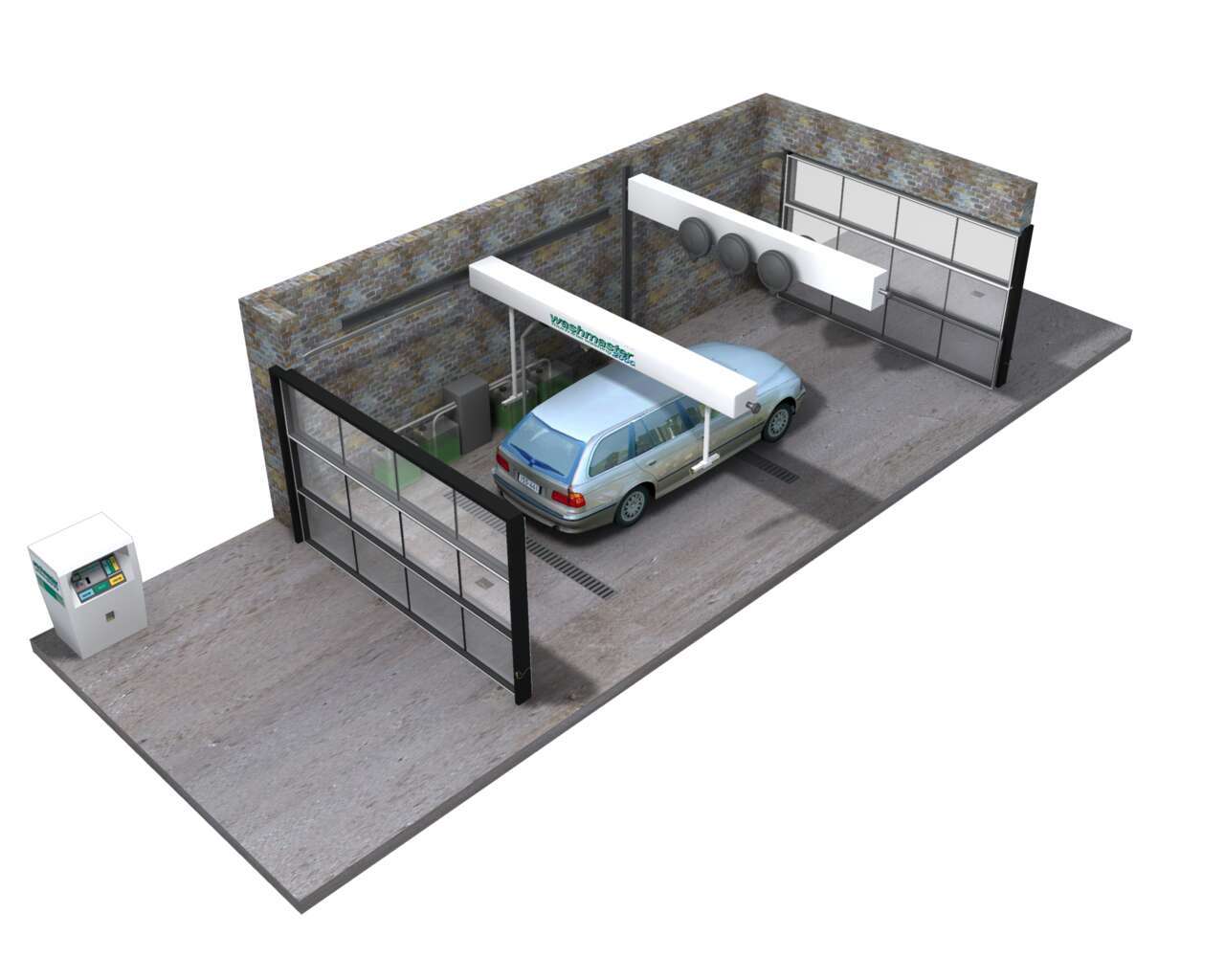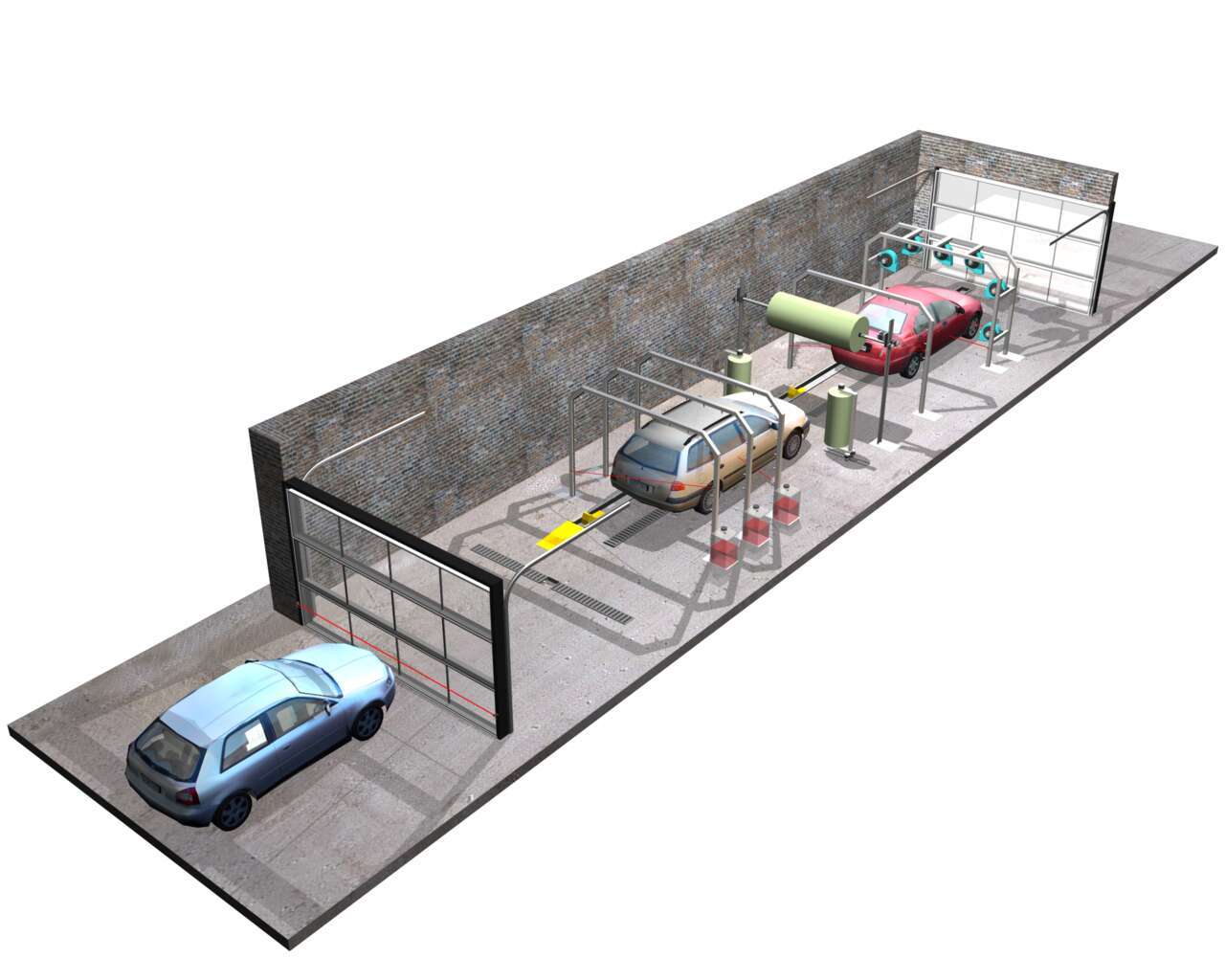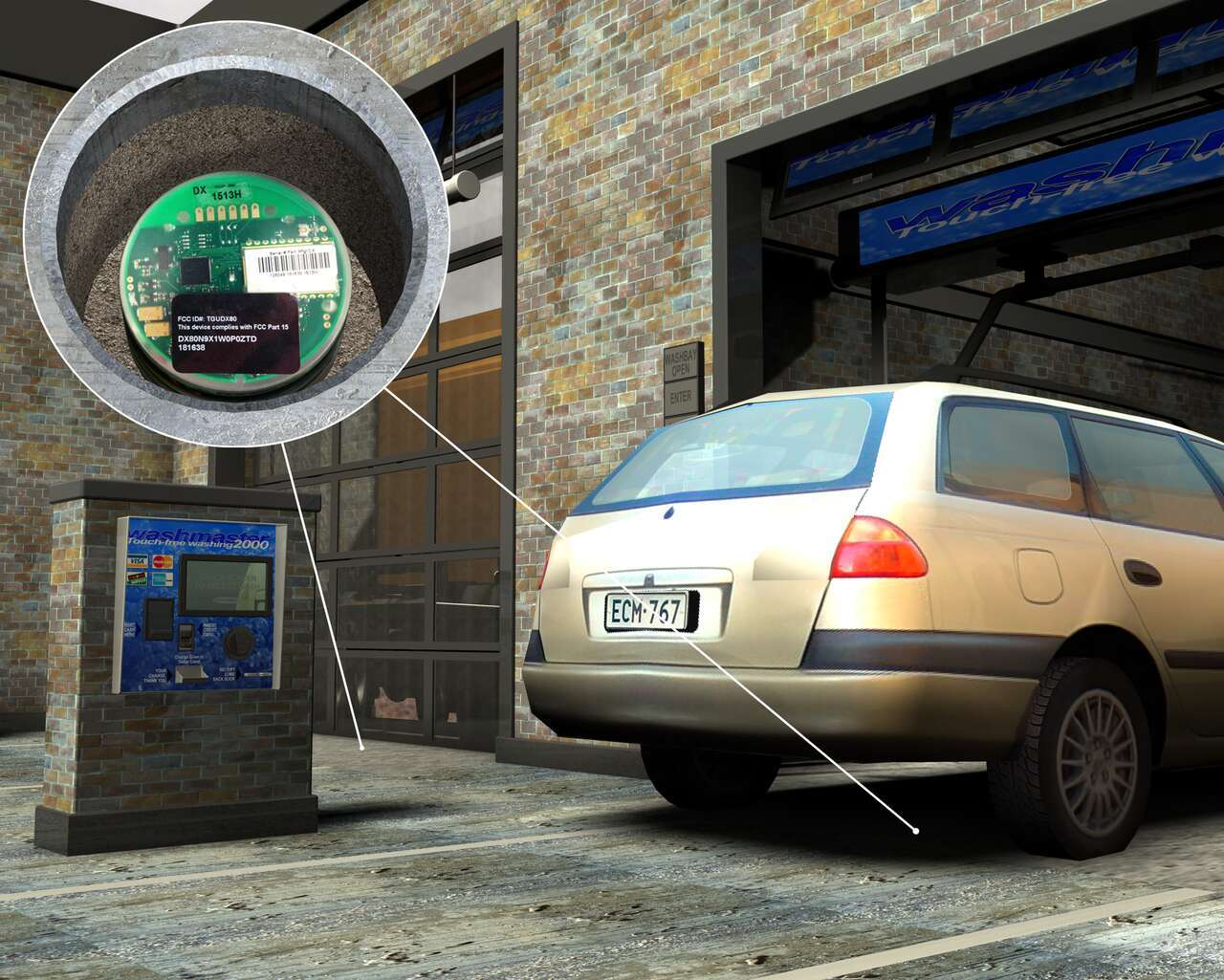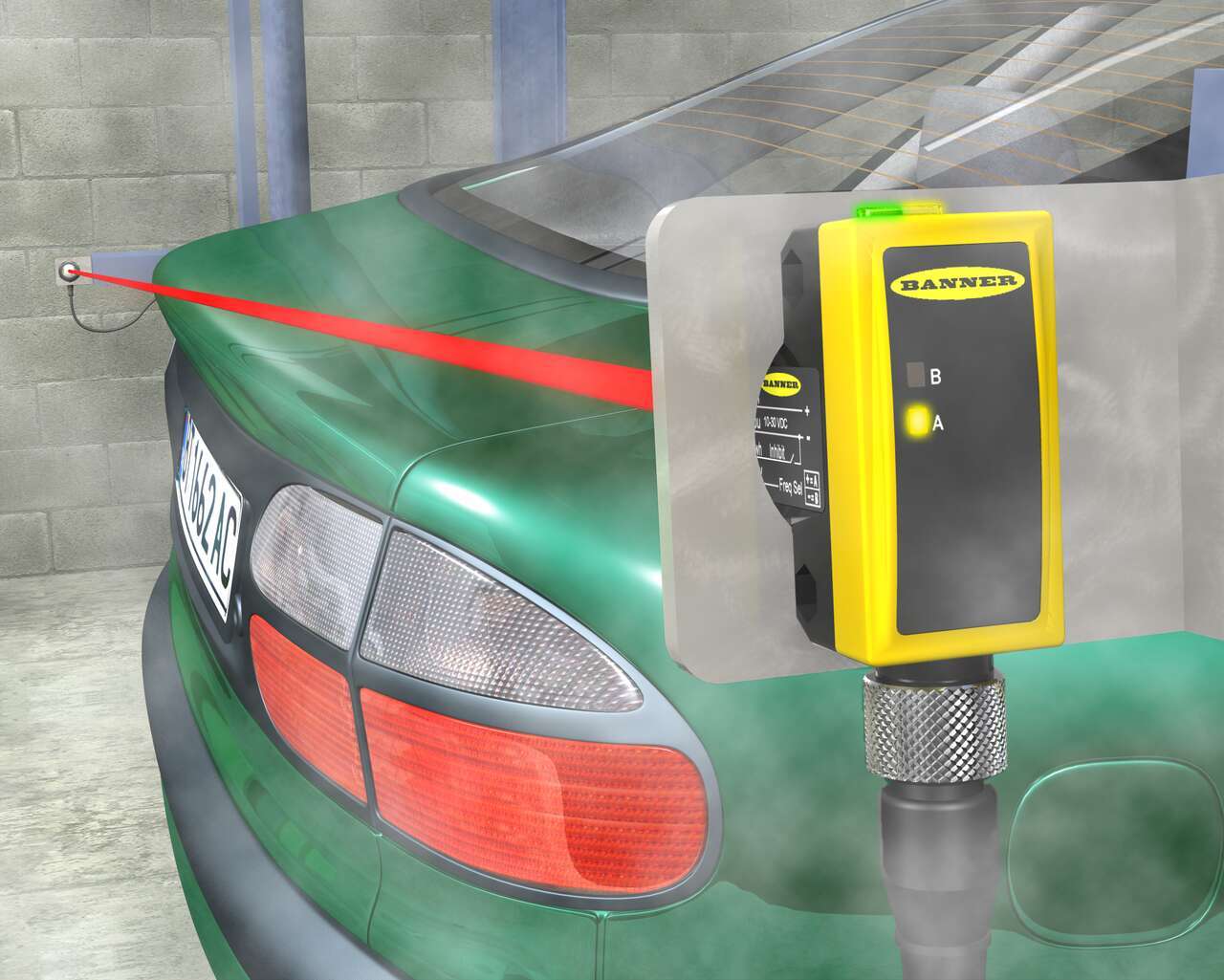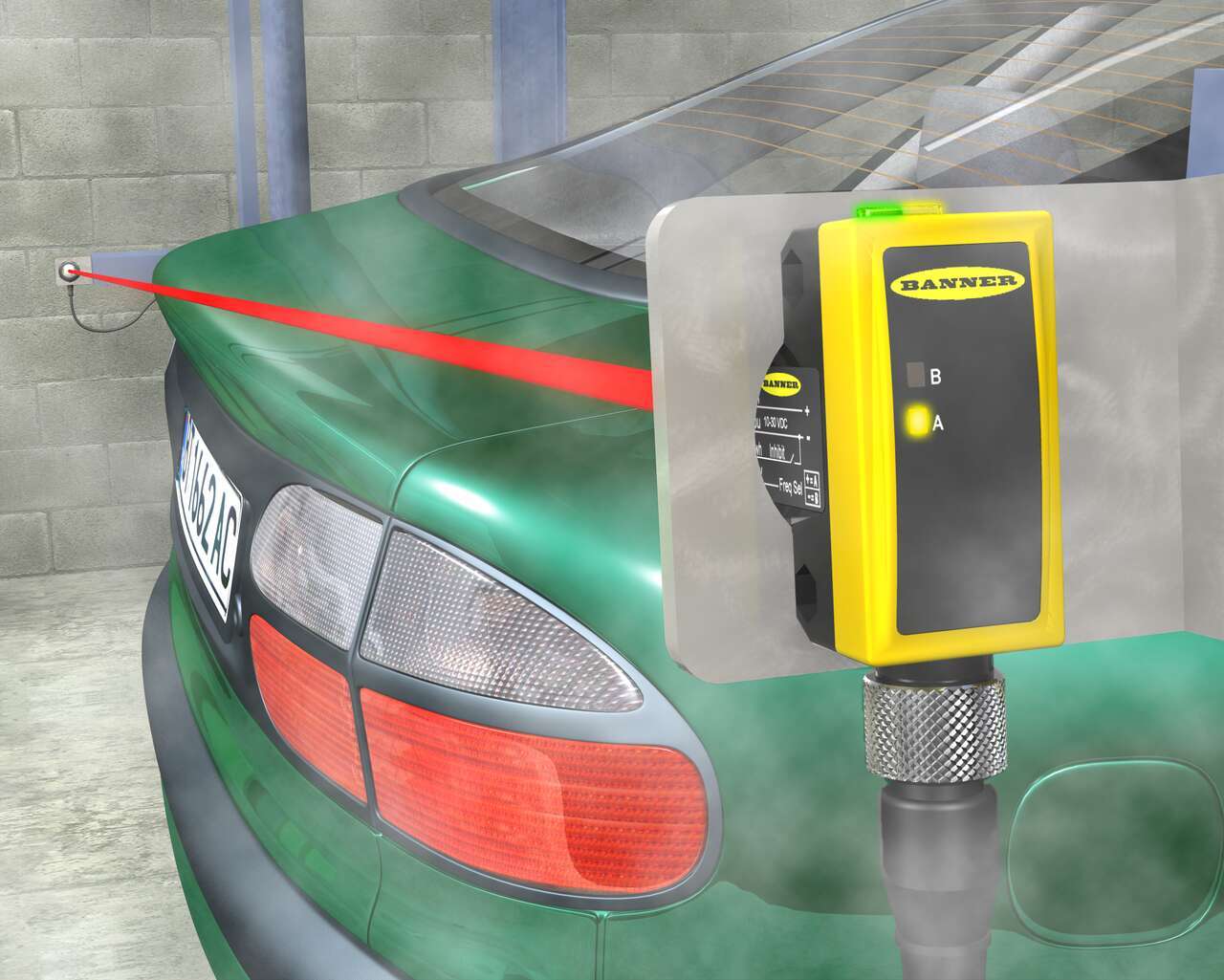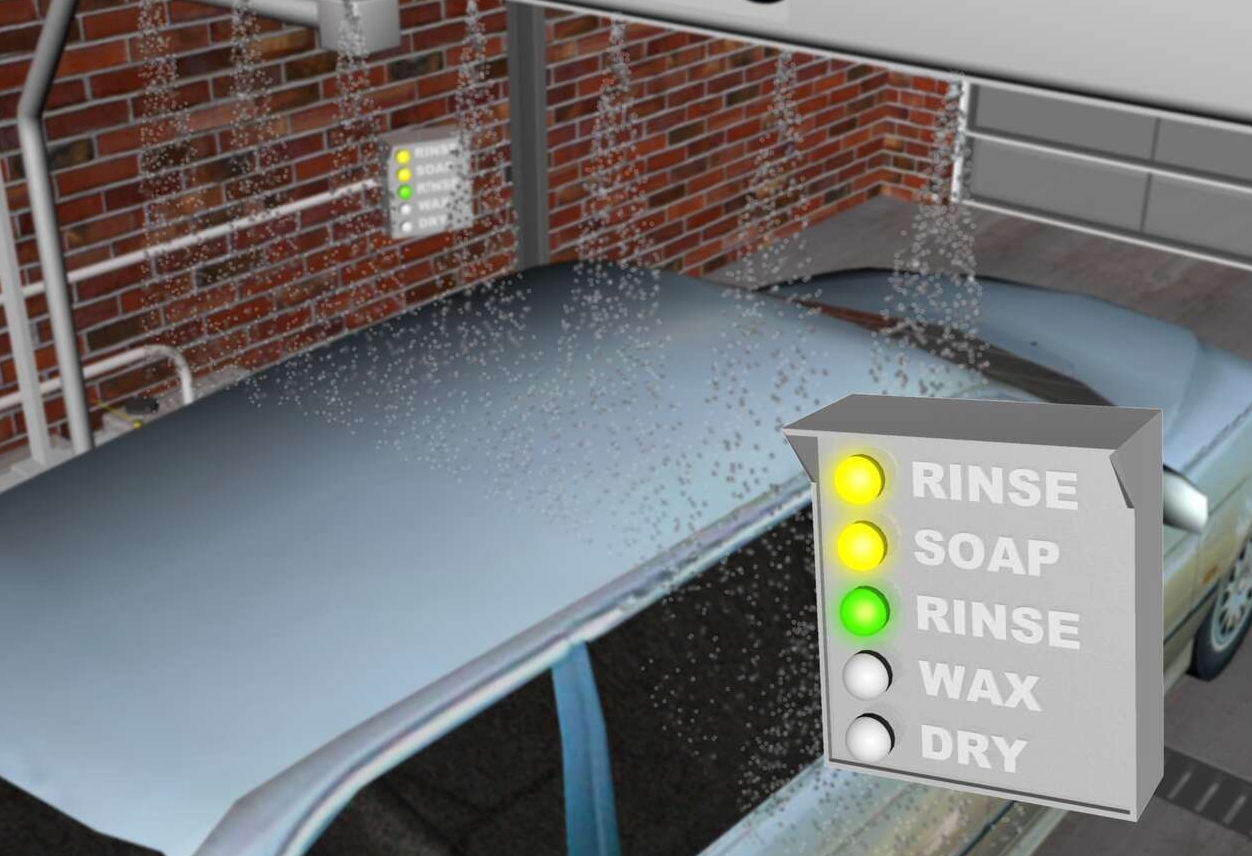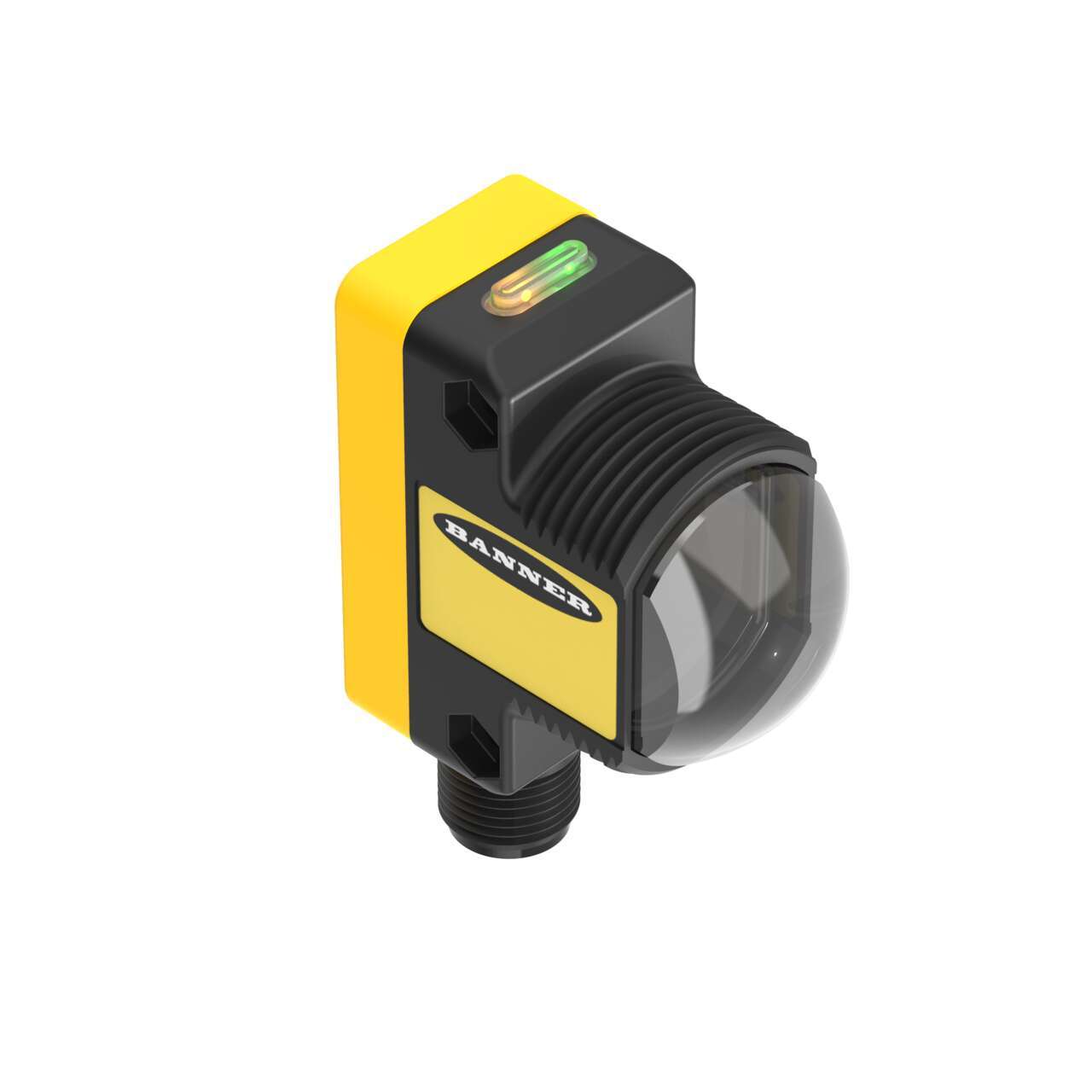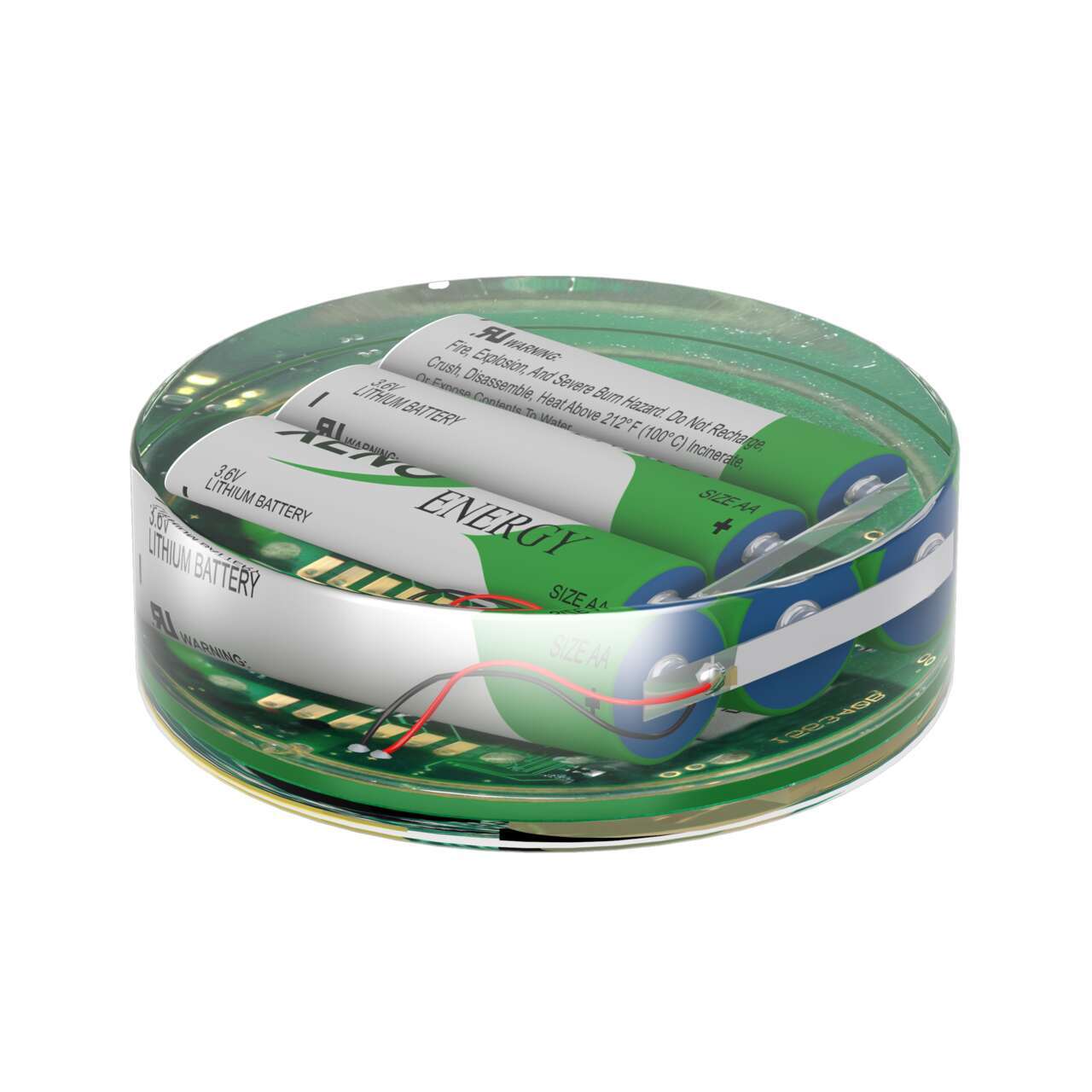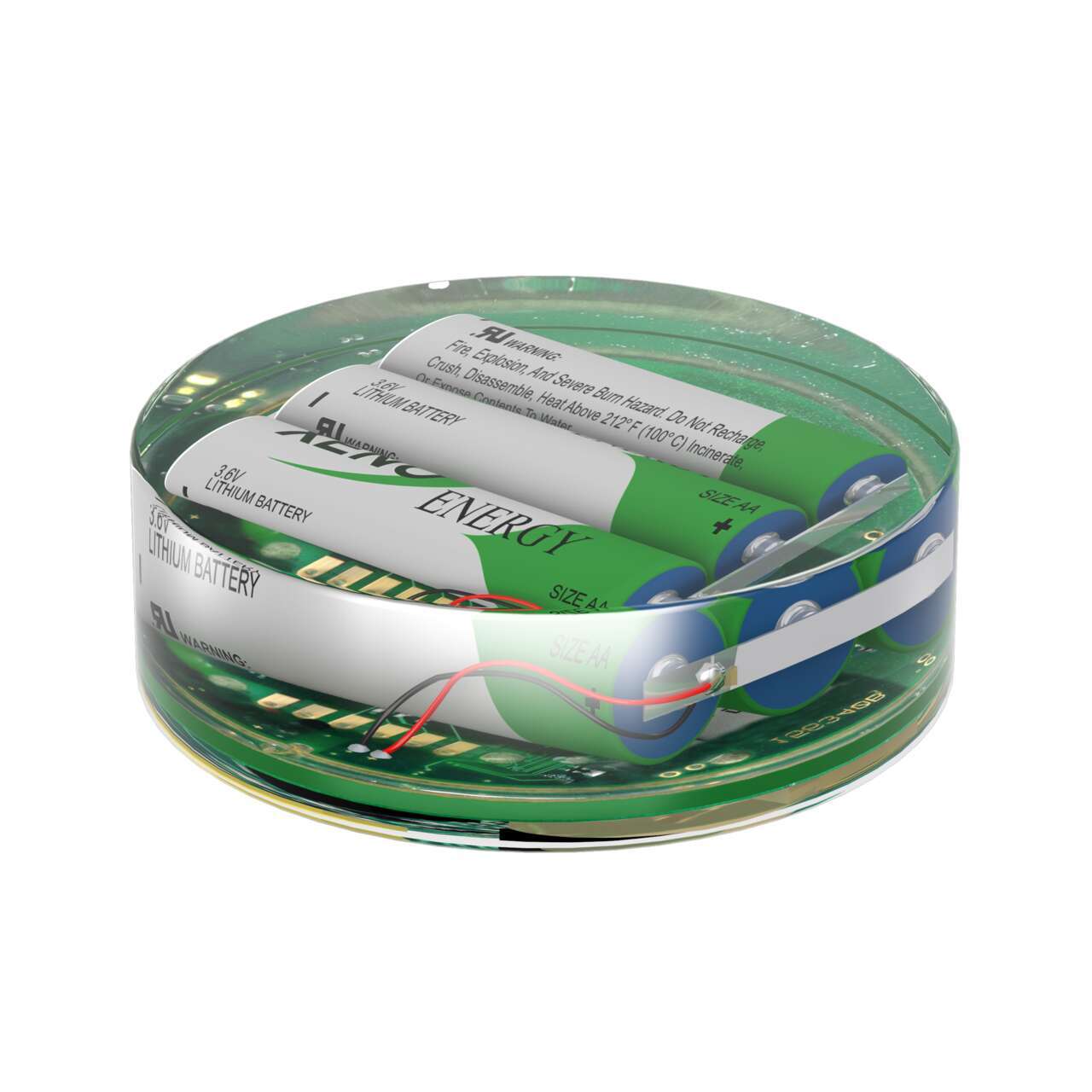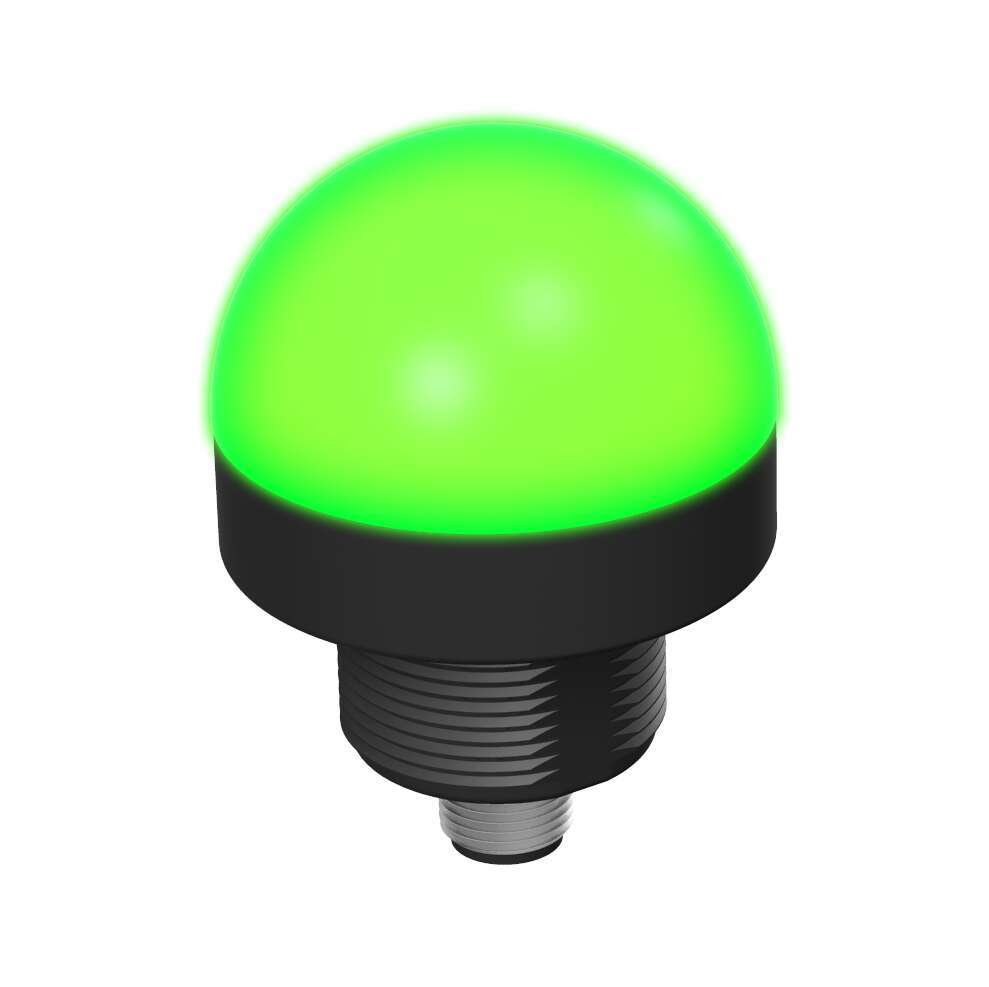Vehicle Detection at a Car Wash
Keep Automated Car Washes Running Smoothly
Vehicle detection at a car wash is essential to verify that vehicles are correctly positioned in the car wash bay, monitor the flow of traffic through the car wash, and trigger next steps such as opening and closing entry and exit doors.
However, harsh conditions both inside and outside of a car wash pose many challenges to traditional equipment, and heavy-duty solutions are required to withstand the environment.
Keep reading to learn about technologies that provide reliable vehicle detection in these difficult conditions.
Car wash facilities often require vehicle detection both outside and inside of the car wash bay to ensure proper flow of traffic and trigger automated entry and exit doors. These applications can be challenging for many sensors due to the harsh conditions both inside and outside of the facility.
Outside of the car wash, sensing technology is exposed to variable weather conditions, like wind and rain, that can impact sensor performance.
Meanwhile, inside of the car wash bay, ever-present water, extreme changes in temperature, sunlight, reflective surfaces, mist and steam, and the constant cycling of machine movement are factors that all must be considered when selecting a sensor for reliable vehicle detection.
Detection at an Automated Car Wash Entrance
Application: Detecting vehicles at the entrance of a car wash to trigger automatic doors.
Challenges: The sensor is exposed to harsh outdoor environments that can impact sensor performance. In addition, a minimally invasive solution is required to reduce costly downtime.
Solution: A wireless sensor like the M-GAGE from Banner is a compact, minimally invasive, and cost-effective solution. Vehicle presence is detected by a node that activates the automated car wash system to power up and trigger the entry door.
Benefits: An wireless sensor node eliminates the need for a large and invasive inductive loop. The wireless node requires no wiring or external control box, but it achieves an accurate and repeatable response. The compact, fully-encapsulated device withstands harsh weather conditions and may be mounted above ground or below ground.
Detection Inside a Car Wash Bay
Application: Sensing vehicles as they travel through cycles of a car wash.
Challenges: Inside the car wash, extreme conditions like high pressure, drastic termperature changes, mist, steam, and humidity can impact sensor performance.
Solution: A high-performance long-range photoelectric sensor that is epoxy-ecapsulated and IP69K-rated for use in wet environments. In the image to the right, the QS30EXQ emitter and QS30RRXQ receiver are configured in opposed mode to verify that a vehicle has passed completely through the drying stage of wash, signaling the car wash is ready to allow another vehicle to begin a cycle.
Benefits: Sensors with epoxy-encapsulated electronics prevent water ingress from destroying the sensitive components, and IP69K-rated housings can withstand the constant presence of water and extreme temperature swings. In addition, sensors with a 875 nm wavelength infrared light can burn through mist and steam for reliable sensing.
LED Indicators Provide Clear Visual Feedback
A car wash vehicle detection solution would not be complete without status indication. Bright, LED indicator lights provide visual confirmation to customers that their vehicle is positioned correctly and that the car wash cycle is beginning. Multiple indicator lights can be used to clearly display which stage of the car wash cycle is in progress.
Similar to sensors, LED lights can be easily damaged by the environment of the car wash bay, so choosing an indicator rated IP69K is essential.
High Performance Photoelectric Sensor
- Innovative 30-mm-Gehäusebauform für nahezu alle Montageanforderungen
- Hochleistungserfassung mit Reichweiten bis zu 200 m
- In den Betriebsarten Einweglichtschranken, Hochleistungs-Einweglichtschranken, Reflexionslichtschranken mit und ohne Polarisationsfilter, Reflexionslichttaster, Laser, feste und einstellbare Hintergrundausblendung sowie Erfassung transparenter Objekte erhältlich
- Sichtbarer Laser der Klasse 1 bei Reflexionslichttaster- und Reflexionslichtschranken-Ausführungen und der Klasse 2 bei Reflexionslichttaster-Ausführungen
- Ausführungen mit Standard-Betriebsspannung 10 bis 30 VDC sowie bipolaren npn-/pnp-Ausgängen oder Ausführungen mit Betriebsspannung 24 bis 250 VAC/12 bis 250 VAC mit E/M-Relaisausgang
- Hell- oder Dunkelschaltung einstellbar oder konfigurierbar, je nach Ausführung
- Schutzart IP67 oder IP69K, je nach Ausführung
- Helle, rundum sichtbare LED-Anzeigen
Wireless Magnetometer
Der M-GAGE-Sensor verwendet eine passive Sensortechnologie zur Erfassung großer Eisenobjekte, zum Beispiel Autos. Der M-GAGE-Sensor bietet eine Alternative für Induktionsschleifensysteme und benötigt kein externes Controllergehäuse.
- Hält die Auswirkungen von Temperaturänderungen und wechselnden Magnetfeldern minimal
- Sensor lernt die Umgebungsbedingungen und speichert Einstellungen in einem nicht flüchtigen Speicher
- FlexPower-Technologie, die von einer im Gehäuse integrierten, einzelnen Primärbatterie mit Strom versorgt wird
- Sender-Empfänger bieten Zweiwege-Kommunikation zwischen Gateway und Knoten, einschließlich Datenübertragung mit Empfangsbestätigung
- Vollvergossenes, versiegeltes Gehäuse enthält eine Stromquelle, einen Sensor und eine Antenne für eine vollständig drahtlose Lösung
LED Indicator
Unsere beliebteste Anzeigelampe. Die 50-mm-Allzweckanzeige ist in Ausführungen für Gleichspannung oder Wechselspannung erhältlich.
- Robuste, kostengünstige und einfach zu montierende Anzeigen
- Beleuchtete Kuppel für gut sichtbare Bedienerführung und Systemstatusanzeige
- Geräte in Kompaktbauform – kein Steuergerät erforderlich
- Betrieb mit 18 bis 30 V DC; Betrieb mit 85 bis 130 V AC
- Darstellung von bis zu drei Farben
- Schutz gegen elektromagnetische und hochfrequente Störungen
